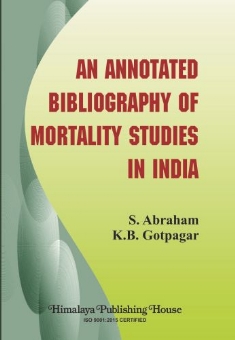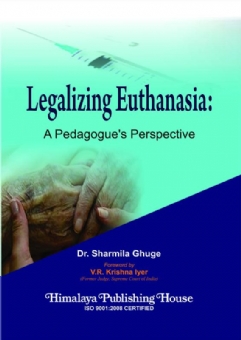The study oil mortality is of great concern and vital interest to public health workers and demographers throughout the world. Perhaps no component of human welfare is as highly valued as prolongation of life itself in the optimal state of health. Planning for improvement of socio-economic conditions in any population depends to a great extent on current data on levels and causes of mortality and future trends. Unfortunately, in most of the developing countries, a systematic study of trends, differentials and causes of mortality is handicapped by lack of complete, reliable and detailed time series data. India is not an exception to this. Further, the rate of infant mortality is considered to be an important indicator of not only the health conditions but also of the socio-economic status in a population. The decline in mortality, and particularly in infant mortality, is often interpreted as implying improvements in general medical care, improvements in environmental sanitation, nutrition, and socioeconomic conditions in general. Studies on levels, trends, and determinants of mortality can hardly be over-emphasized.
The association between mortality levels and health programs is not as simple as it appears to be. A rapid decline in mortality levels has played a significant role in the acceleration of population growth in India during the past three decades, and this component will continue to play this Important role for many more years to come. In India infectious diseases have all along been great hazards to life and are considered as major causes of infant and child mortality. The need for a considerable improvement in the delivery of health care to protect the population from various infectious diseases still remains the dominant part of the public health programmes in most parts of the country. Restructuring of public health programmes calls for a good review of the changing age pattern and cause of death.
The “cause of death” statistics obtained from the Civil Registration Scheme are of little value in India for analysing the factors underlying the causes of death in the country since the quality of data in the registration system is woefully poor. Thus, though studies of levels, trends and causes of mortality are of vital importance, they are handicapped by paucity of reliable data and divergence of results obtained from various studies. It appears necessary to take a review of the past trends and also future prospects of mortality in the country as could be discerned from the existing literature. The present work which is an annoted bibliography of studies on mortality in India is an attempt in this direction. It is based mostly on published materials available in the Library of the International Institute for Population Sciences, Bombay.
The purpose of the present bibliography is to provide research workers with a comprehensive annoted bibliographic base of mortality studies on India undertaken during the past six decades, which will be useful to research scholars and public health workers in their reference work. It contains bibliographic citations that reflect recent developments in technical and substantive aspects of mortality as well as policy issues and their implications. The citations include about 370 published and unpublished materials, journal articles, books, conference papers, papers of the technical workshop, project reports, etc., from 1921 to the present. The studies have been arranged in four broad categories. viz. (i) General mortality (including causes of death), (ii) Infant, neonatal, postneonatal and perinatal mortality, (iii) Maternal mortality, and (iv) Life Tables. Within each category they are arranged in an alphabetical order by the authors of the research papers.
Contents –
Part I
General Mortality and Causes
Part II
Infant Mortality Perinatal Mortality Neonatal Mortality Post-Neonatal Mortality
Part III
Maternal Mortality
Part IV
Life Table






